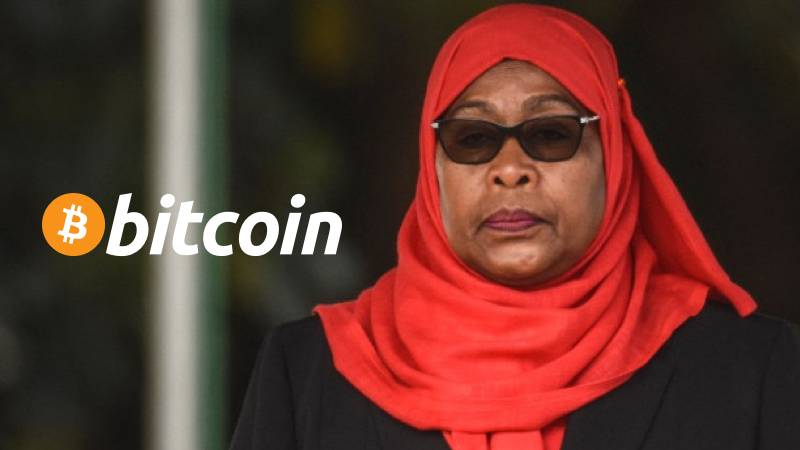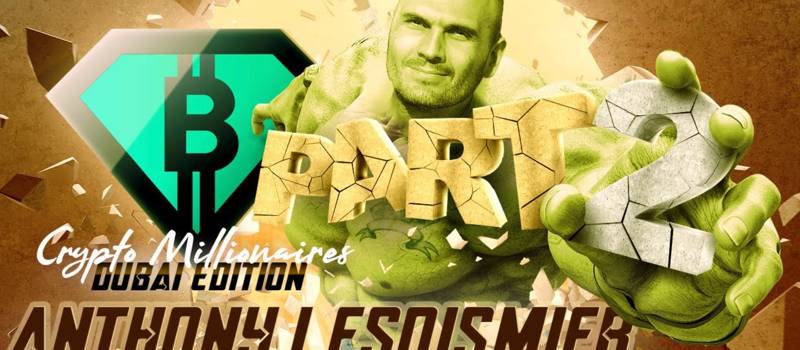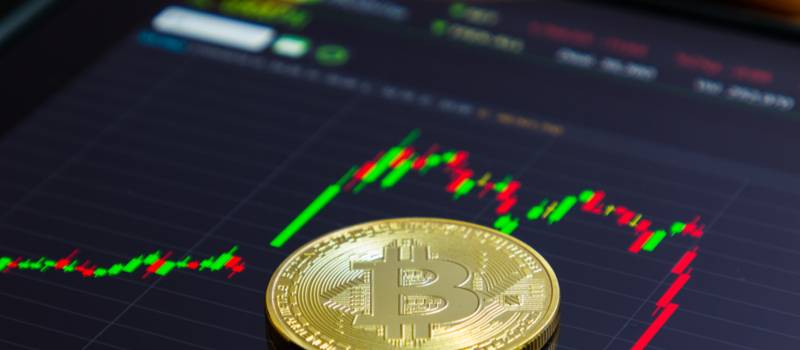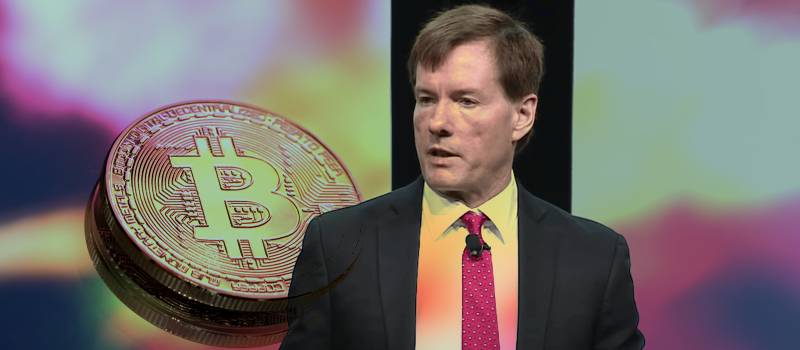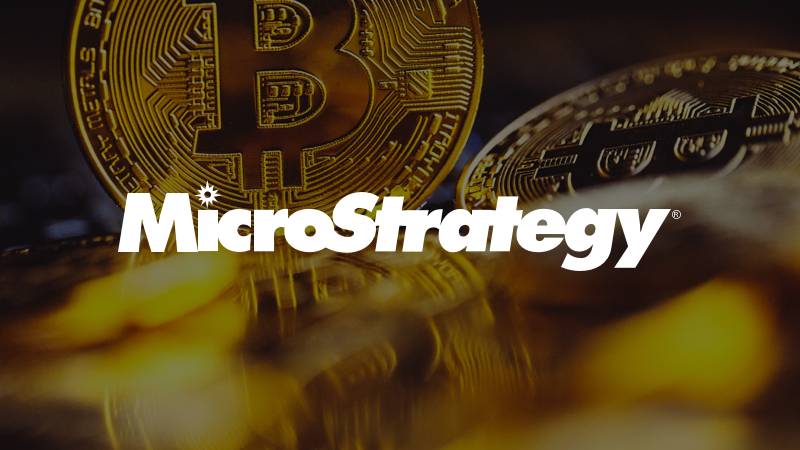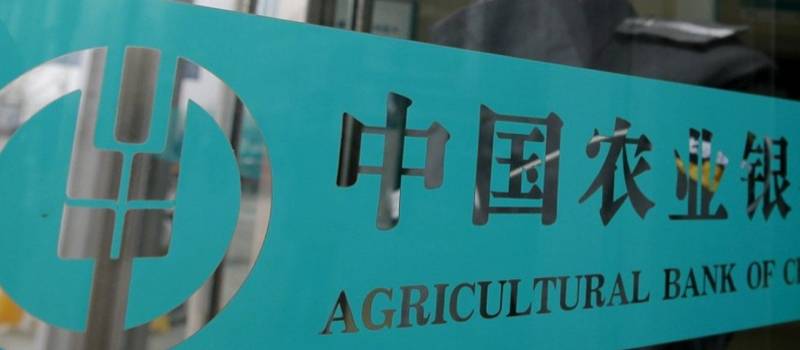June 2021 In Review
The month of June saw a classic struggle between the bulls and bears of crypto, with lots of commentary to be found making the case for each persuasion. Who do you believe? Perhaps it is difficult to know, and it may be helpful at this junction to review what you have heard before, and which of those opinions actually rang true from today’s perspective. And, by the way, it’s always a good time to remember that wealth and the pursuit of money should never consume one to such a degree that life itself passes you by. Finding riches right from within one’s family, one’s group of friends, and especially from within oneself, always hits the mark, providing consistency and granting one peace, security, and joy – the stuff life should be about. Take the kids to the amusement park, the beach, or camping; take your spouse out to dinner and a show; find yourself lost in a good book out on the back patio – after all, that’s what all this money is supposed to provide you with – things that make life richer. Turns out, you don’t need a lot of money to do these things. So, here’s to finding your spiritual base and knowing with faith, the rest will come in time. Remember that too much of the market – any market – will only make one a nervous wreck. My suggestion – make a commitment right now to prioritize the enjoyments in your life; and second to that, place the making of money as your side bar.
That being said, June was ripe with conflict. Those of us in the game for the long-term never waiver. Hodling crypto is an exercise in testing your own limits for enduring seemingly daily chaos. Do you have what it takes to make it through to the finish line? Remember what I said before: as always in trading asset classes of any kind, patience and a calm-hand are virtues. A lot happened in June, and we seem to be on an ever-accelerating trajectory in discovering what factors will influence the crypto market for the foreseeable future. Early in the month, The Reserve Bank of India adopted a friendlier stance towards crypto; Argentinians began to bank on mining Bitcoin (BTC) as foreign miners headed for their cheaper energy; and one of the world’s largest fund managers with $270 billion in client assets under management, Guggenheim Partners, began seeking exposure to Bitcoin as part of a new fund, according to a filing with the US Securities and Exchange Commission (SEC). Former Congressman Ron Paul advocated legalizing Bitcoin as tender to compete with the dollar. By the middle of the month, El Salvador and Paraguay set in motion policies which will make Bitcoin legal tender; Paypal processed nearly $2 billion worth of Bitcoin, Ethereum, and Litecoin trades; and the US multinational bank, Goldman Sachs’s global head of digital assets, stated that GS will begin to offer trading in Ethereum (ETH) futures. Does this sound like an asset that is going to zero? Didn’t think you would think so, although you can find any number of pundits suggesting that will be the case. As the month came to a close, the business analytics firm MicroStrategy acquired 13,005 more Bitcoin (that firm now holds over 105,000 Bitcoin in total), and, yet again, China FUD stepped in to try drinking everyone’s milkshake, and this even had Jim Cramer selling his Bitcoin. Then what happened? Bitcoin began another leg up. Lesson learned: don’t be a Jim Cramer!
Reserve bank of India slams banks after they stop services for crypto users
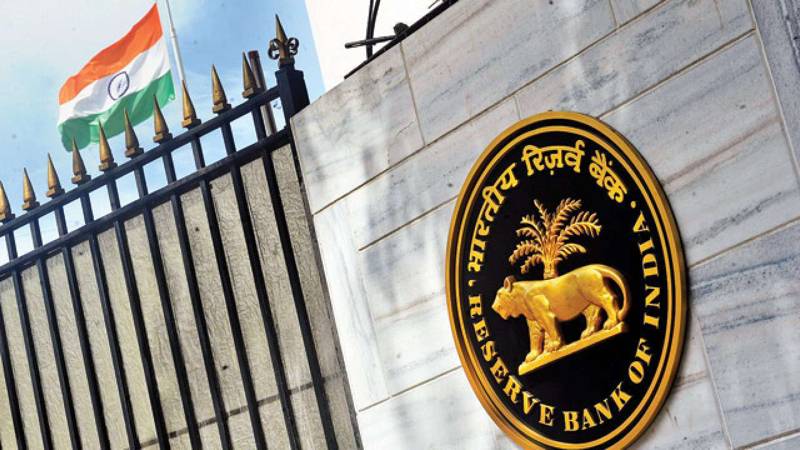
The Reserve Bank of India, the country’s central bank, released a new directive early in the month after local banks ceased crypto services for users citing a directive from 2018, an official filing shows. In the report, the bank stated clearly, “It has come to our attention through media reports that certain banks and regulated entities have cautioned their customers against dealing in virtual currencies by making a reference to the RBI circular dated April 06, 2018.” Such references to that archaic circular by banks and regulated entities were “not in order” after the circular was set aside by the Hon’ble Supreme Court on March 04, 2020, the filing went on to say. Primarily due to the way its financial structure is governed, India has a somewhat shaky relationship with cryptocurrencies. However, it is important to note that the country’s Financial Ministry, which oversees all financial innovation in the country, is suggestively more crypto-friendly than the RBI, which controls how the rupee is issued and circulated, and which has a tendency to view cryptocurrencies as a ‘threat.’ This time around, even the RBI stepped in to clarify its stance. This started when banks like HDFC, SBI, and others recently sent curricula to crypto-linked customers during the past few months stating they would not support transactions to and from crypto businesses. The banks were citing the 2018 dictum for their decision, adding that such accounts face the risk of termination should they continue to engage with crypto services. However, in its directive early last week, the RBI said, “Banks, as well as other entities addressed above, may, however, continue to carry out customer due diligence processes in line with regulations governing standards for KYC, AML, Combating of Financing of Terrorism (CFT) and obligations of regulated entities under Prevention of Money Laundering Act, (PMLA).” Meanwhile, local entrepreneurs said the move was a step in the right direction. In a statement to local outlet the Economic Times, Nischal Shetty, Founder and Chief Executive Officer of crypto exchange WazirX, said, “This is a very positive development for the whole industry. There was a lot of confusion among banks whether they can service their clients in the industry. This notification makes it clear.” Indian crypto users are arguably relieved.
Economist intelligence unit’s report shows trends behind the increased acceptance of cryptocurrencies

A stratospheric rise in its use of cryptocurrency has materialized over the last year, primarily due to the pandemic. As more and more businesses are readily accepting digital currency as payment for goods and services, the number of crypto transactions has risen by a huge margin. Crypto.com, one of the world’s largest crypto exchanges, commissioned the Economic Intelligence Unit (EIU), the world leader in global business intelligence, to organize a consumer survey across North America, Asia, and Europe. This was in attempt to understand what’s driving this shift and derive actionable data. The annual report released by the EUI, entitled “Digimentality—Fear and Favoring of Digital Currency,” underlined several new trends after running comparative analysis with its 2020 survey. The results reveal that the use of digital currencies and transactions has increased manifold over the previous year.
More than 3000 consumers, mainly in the 18-38 age group, from both developed and developing countries, such as the Philippines, South Africa, Vietnam, Brazil, and Turkey, participated in the survey. Part of the report also derived data from another study of 200 institutional investors and corporate treasury management professionals. Notable highlights of the report included: due to the physical distancing norms implemented during COVID-19, almost 81% of the participants agreed that they could see their country gradually becoming a cashless economy, compared to 72% in 2020. Consumers are increasingly favoring digital transactions, and 46% of the surveyed consumers agreed that COVID-19 heightened the use case for digital currencies/assets. The survey results and report were reviewed by Henri Arslanian, PwC Global Crypto Leader, and Mathew McDermott, Managing Director and Global Head of Digital Assets at Goldman Sachs. Seeing this sharp rise in the acceptance of cryptocurrencies in day-to-day life, Henri Arslanian commented, “This is such a pivotal moment in the history of money, in the future of money and there’s been a couple of catalysts to it, and one of them was actually COVID-19.” Cryptocurrencies remained the most well-known digital currency choice. More than 55% of consumers surveyed in 2021 admitted they were aware but had never owned or used a cryptocurrency. Other significant trends included: Of the total participants, 27% said they preferred digital payments instead of fiat currency or credit cards. By comparison, 41% claimed that they used digital currencies for at least half of their purchases, compared to a mere 22% from 2020. 18% of the surveyors said they used open-source cryptocurrencies (Bitcoin, Ethereum, etc.), followed closely by 12% of consumers using government-issued CBDCs and 10% using any other digital currency issued by a verified entity. The 2021 report further clarified that 17% of the participants said they expect their country to become cashless within a year or two. Mathew McDermott added, “As more people adopt and have access to digital wallets, you can just see the number who have access and invest in cryptocurrencies continues to broaden.”
You can find in-depth details, year-over-year comparisons, and insights from institutional investors and corporate treasurers on the official website.
ARGENTINIANS TURN TO BITCOIN MINING TO SUPPORT LIVELIHOOD AMIDST FAILING ECONOMY

In the heart of an economic crisis, ultra-low utility costs are enabling Argentinians to bank on mining Bitcoin (BTC) as foreign miners head for their piece of the electricity cake, local reports said. It is not only locals who are taking advantage of the situation. Bitfarms, a Canadian Bitcoin mining company, announced it is opening a new mining facility in Argentina. Some of the events driving Argentina’s success with mining are devaluations, defaults, hyperinflation, foreign-exchange controls, and a pinch of ultra-cheap electricity. Put together, these events proved to be the basic ingredients for boosting local mining operations, and local miners are benefiting from Argentina’s long-standing residential electricity subsidies. This is a national policy intended to win political votes, but which is causing tension within the ruling Peronist coalition. “Even after Bitcoin’s price correction, the cost of electricity for anyone mining from their house is still a fraction of the total revenue generated,” said Nicolas Bourbon, a miner from Buenos Aires, in a note to Bloomberg. Capital controls limit individuals to legally convert merely $200 per month, but inflation is racing at roughly 50% annually, and this is fueling the demand for any store of value. Panic for hedging into non-peso assets keeps pushing the value of Bitcoin in unofficial markets, which greatly adds to the plethora of reasons to mine crypto. Bitfarms, the Canadian miner, secured a deal to tap directly into a local power plant, enabling them to draw 210 megawatts of natural gas-powered electricity. According to Bitfarms’ announcement, “The proposed new mining facility is in very close proximity to the utility, and, as such, the electricity contract does not involve any interconnection with the local power grid, which has the advantage that electricity cannot be curtailed during times of unusually high usage.” Thus far, the company has a diversified production platform with five facilities located in Québec, and each one of them is 100% powered by environmentally friendly hydropower. “We were looking for places that have overbuilt their electrical generation systems. Economic activity in Argentina is down, and power is not being fully utilized. So, it was a win-win situation,” said the company’s president, Geoffrey Morphy. The initial term of Bitfarms’ contract in Argentina is eight years, and throughout the first four years, the effective cost of the electricity will be at a grand bargain of $0.022 per kilowatt-hour.
$270 BILLION FUND GUGGENHEIM IS SEEKING BITCOIN EXPOSURE, SEC FILING SHOWS

One of the world’s largest fund managers with $270 billion in client assets under management, Guggenheim Partners, is seeking exposure to Bitcoin as part of a new fund according to a filing early in June with the US Securities and Exchange Commission (SEC). The ‘Guggenheim Active Allocation Fund’ will invest in cryptocurrencies (mainly Bitcoin) as part of a larger bracket of traditional and alternative assets. Utilizing both quantitative and qualitative analysis to identify securities with attractive relative value and risk/reward characteristics, the filing stated, “the Fund may seek investment exposure to cryptocurrency (notably, Bitcoin), often referred to as “virtual currency” or “digital currency,” through cash-settled derivatives instruments.” However, Guggenheim addresses the many risks that cryptocurrencies are susceptible to, as well, including their volatile nature, the chance of exchanges going offline, cyber risks, negative public perception, and the general risks attached to any technological investment. More positively, Guggenheim pointed out several factors which aid the development of the overall crypto market: “Factors affecting the further development of cryptocurrency, include, but are not limited to: continued worldwide growth or possible cessation or reversal in the adoption and use of cryptocurrency, changes in consumer demographics and public preferences, and the use of the networks supporting digital assets for developing smart contracts and distributed applications.” Just last year, Guggenheim filed with the SEC to invest as much as 10% of its $5.3 billion ‘Macro Opportunities Fund’ in the Grayscale Bitcoin Trust—a regulated institutional vehicle that allows investors to gain exposure to Bitcoin. Guggenheim CIO Scott Minerd has since commented multiple times on Bitcoin prices. He stated last year that the asset could be valued at as much as $400,000 in the coming years, citing scarcity and protection against inflation as two major characteristics. And even so, Minerd turned bearish in April, stating the currency could fall over 50% after reaching highs of $62,000. Bitcoin did end up falling to as low as $29,000 in May.
FORMER U.S. CONGRESSMAN RON PAUL SAYS LEGALIZE BITCOIN AND ‘LET IT COMPETE WITH DOLLAR
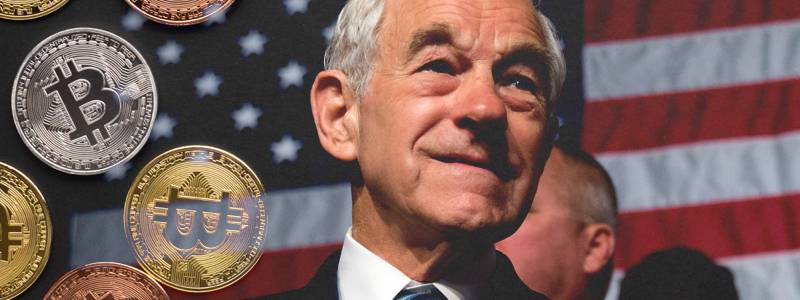
Ron Paul, former 12-term US Congressman from Texas, warned about the intricacies of current inflation and the government’s crackdown on crypto in an interview for Kitco News.
Advocating free markets and competition, the former presidential candidate argued his case for the legalization of Bitcoin (BTC) while warning about the consequences of Federal Reserve (Fed) policies. According to Paul, pandemic-era inflation due to the unchecked money printing from the Fed is going to be detrimental for the economy, and he pointed out that governments have controlled money for centuries and are not going to give it up. “One of the most appealing aspects of crypto is the absence of government and central banking,” Paul said. The debasement of the dollar caused rising interest in Bitcoin as a safe-haven asset, and according to Paul, “the dollar will stick around, but won’t be worth much,” but this will lead governments to crackdown on cryptocurrency. He applied the same concern to gold, referring to President Roosevelt’s move in 1933 to impose limitations on gold ownership in the US under the pretense that the depression caused “hoarding” of gold and was stalling economic growth. That order was repealed during the Ford administration 40 years later. Paul believes something similar could happen again. “Our problem isn’t the technicalities of (the) gold standard or crypto, our problem is the dependency on government and less concern about personal liberty,” he said. Paul is predicting the government will become increasingly aggressive as Bitcoin gets more successful. One of the simplest ways to fund the Fed is through tax regulations. “Right now, if you buy and sell gold, you get it taxed, they can do that. If you make a profit in Bitcoin, you read stories about people being taxed on it. You can’t tax money. If you bought a dollar a year ago and it went down 10%, you can’t take a loss because your dollar lost value.” The Securities and Exchange Commission (SEC) tackles the market through lawsuits, and the government keeps insisting crypto is taxable because the IRS identifies it as property, not currency.
FORMER U.S. CONGRESSMAN RON PAUL SAYS LEGALIZE BITCOIN AND ‘LET IT COMPETE WITH DOLLAR

During an interview with business outlet CNBC late last week, Miami mayor Francis Suarez revealed that he holds Bitcoin and Ethereum. “I own Bitcoin and I own Ethereum,” Suarez said. “I haven’t bought the dip yet but I’m planning to. I’ve just been too busy.” During the interview, the mayor revealed he had purchased Bitcoin in the “high 30’s” and Ethereum when it hovered around $1,500. This means both his investments are now profitable, and had been up over 100% and 300%, respectively, at their peak. Suarez said he had purchased both of the cryptocurrencies when the United States Senate passed the $1.9-trillion stimulus bill in March. “I knew at that point that inflation was inevitable and that there had to be some sort of a hedge,” he said in this regard. The sentiment is similar to those shared by institutional traders and technology entrepreneurs alike. Over the past year, companies like MicroStrategy and Tesla have picked up billions of dollars’ worth of Bitcoin from their treasury funds, citing massive money printing and fears of overinflation as major reasons. Others like Stanley Druckenmiller have jumped on the Bitcoin train recently, citing similar arguments. “When we did the CARES act, Chairman Powell started crossing all sorts of red lines in terms of what the Fed would do and wouldn’t do,” Druckenmiller said during a recent interview. “The problem was Jay Powell and the world’s central bankers going nuts and making fiat money even more questionable than it already has been when I used to own gold.” Miami Mayor Suarez is one of the few political figures to turn a friendly hand towards cryptocurrencies while planning future developments for the growing market. Last year, Suarez said he was exploring the possibility of Miami citizens paying bills using crypto. He even considered buying Bitcoin for the city treasury back in December, receiving mostly favorable comments for his statement at the time.
JACK DORSEY REVEALS SQUARE COULD LAUNCH A HARDWARE BITCOIN WALLET

Payments company Square was weighing the launch of a hardware Bitcoin wallet, according to its CEO, Jack Dorsey, on Twitter. “Square is considering making a hardware wallet for #bitcoin. If we do it, we would build it entirely in the open, from software to hardware design, and in collaboration with the community,” he said. By enabling sellers to turn their mobile devices and computing devices into payments and point-of-sale solutions, the eCommerce ecosystem enables customers to start, run, and grow their businesses. A famed Bitcoin proponent, Dorsey and Square have previously invested over $220 million in the world’s largest crypto asset. Stating that security and custody were a massive problem for everyday holders, Dorsey asked in his tweet, “What are the biggest blockers to get a non-custodial solution to the next 100M people?” In his tweet thread, Dorsey also raised issues regarding the design, safety features, accessibility, and overall self-custody for users of the wallet. His tweets mainly focused on one-stop, fully self-custodial wallet solutions for people to hold their own Bitcoin, instead of depending on a centralized entity or third-party solution. He went on to point out that most people access the internet on mobile. “Any solution we build must provide an excellent experience when using mobile, despite its shortcomings and liabilities,” he said, adding, “an uncompromising focus on mobile interaction is likely to include the most people. What are the dangers here? Make it easy for customers to keep the funds they want quick access to at their fingertips, spendable with phone-only permissions; while keeping the remainder under tighter, less available, but more secure controls.” Square stock bumped 2.59% after the announcement. Dorsey finished the thread by tweeting, “and we’ll set up a dedicated Twitter and github account if we decide to build. We’ll update this thread with that information when we’re ready. Thanks!”
El Salvador set to become first country to adopt bitcoin as legal tender
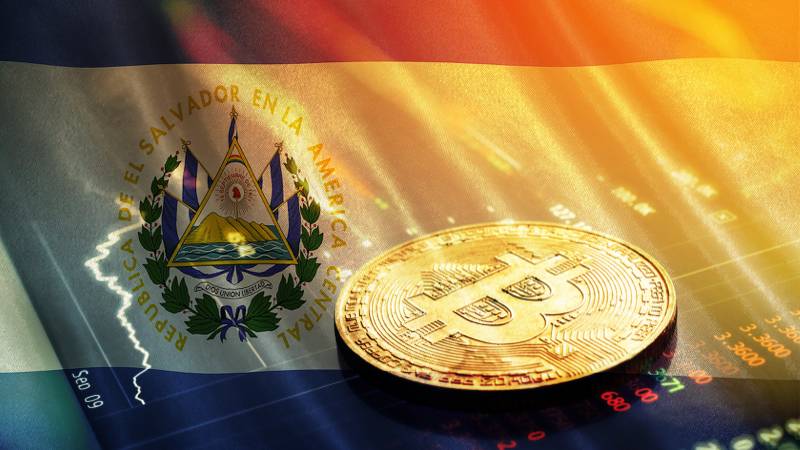
“Next week, I will send to Congress a bill that will make Bitcoin a legal tender,” said El Salvador’s President, Nayib Bukele, while speaking during a video broadcast at the Bitcoin 2021 conference held in Miami during the second week of June. The President also revealed that the country had entered a partnership with the famous digital wallet company, Strike, in order to build a modern financial infrastructure for the country using Bitcoin technology. President Bukele supported his decision in a series of tweets. “#Bitcoin has a market cap of $680 billion. If 1% of it is invested in El Salvador, that will increase our GDP by 25%. On the other side, #Bitcoin will have 10 million potential new users and the fastest growing way to transfer 6 billion dollars a year in remittances.” Jack Mallers, the founder of Strike, pronounced that “holding Bitcoin provides a way to protect developing economies from potential shocks of fiat currency inflation.” Mallers added that the move would help unleash the power and potential of bitcoin for everyday use on an open network, and this would benefit individuals, businesses, and public sector services.
During his video broadcast, President Bukele stated, “Financial inclusion is not only a moral imperative but also a way to grow the country’s economy, providing access to credit, savings, investment, and secure transactions.” El Salvador is a cash-dependent economy, and the president felt that adoption of Bitcoin would lead to more financial inclusion for the state’s citizens. Crypto enthusiasts are taking this development with extreme excitement, as many of them believe that this is further indication that the leading crypto asset is gaining ground globally. According to Justin Sun, the founder of TRON, the move by the American country will lead to more crypto investors and entrepreneurs moving there. Microstrategy’s chief executive, Micheal Saylor, tweeted, “Welcome to Bitcoin.” At the same time, Caitlin Long, the CEO of Avanti Bank, hailed the announcement as a historic day in the history of Bitcoin. CZ, the top executive of the leading crypto exchange Binance, asked his followers to predict the next country that would be adopting BTC. He then added, “El Salvador is beautiful.”
Paraguay joins the crypto train, says ‘Bitcoin to the moon’

Paraguay Congressmen Carlitos Rejala said in a tweet that Paraguay is setting an important project in motion, hinting at Bitcoin (BTC) and its legal tender status. This came only a day after the announcement made by El Salvador President Nayib Bukele, and it seems Paraguay may be the next country racing to legalize Bitcoin. Rejala, who is the Chamber of Deputies representative, updated his profile photo on Twitter by adding laser eyes. “As I said a long time ago, our country needs to go hand-in-hand with the new generation. The moment has come, our moment. We start this week with a valuable project that will renew Paraguay in front of the world,” Rejala tweeted, adding at the end of his announcement, “to the moon #btc & #paypal.” Bitcoin adoption took a dramatic spin as politicians in Latin America started declaring the region is ready to open up to crypto. The drums began to beat last week when the president of El Salvador, Nayib Bukele, disclosed plans to give Bitcoin the status of legal tender, announcing the bill will be presented to regulators at the end of last week. It would seem that the legal tender stage of crypto adoption is here as countries put in motion plans for adding Bitcoin to their state treasury. To protect their economy from inflation and the domino effect caused by the depleting value of the US Dollar, countries such as El Salvador and Paraguay have come to realize that Bitcoin might be a solution. Currently, the world is witnessing dramatically opposite positions among governments around the world, ranging from rigid disapproval to welcoming adoption.
However, it is important to note that hyperinflation and devaluations cause safe-haven assets such as crypto to become increasingly sought after, and it is believed that more countries are going to join the crypto train as it departs since they know investors are going to gravitate towards it.
PayPal processed nearly $2 billion worth of bitcoin, Ethereum, and Litecoin trades in May

itBit, which is PayPal’s custodian of crypto funds, traded over $2.1 billion worth of Bitcoin, Ethereum, Bitcoin Cash, Litecoin, and PAX in May, according to data provided by the analytics tool Nomics. Owned by Paxos, itBit is a crypto exchange that provides liquidity for PayPal, which is the US company operating an online payments system and which had entered into the crypto market in October 2020. PayPal, which currently supports four cryptocurrencies: Bitcoin (BTC), Ethereum (ETH), Bitcoin Cash (BCH), and Litecoin (LTC), utilizes easy-to-integrate APIs which have enabled the payment system to enter the crypto market on a massive scale. The itBit exchange has seen extensive growth in trading volume recently, and one possible reason is that the PayPal cryptocurrency platform has a high utility among its users. On May 19, right after the broader crypto assets started to sell, the itBit exchange hit a record $303 million daily trading volume. Prior to PayPal stepping into the crypto market, the crypto exchange hit a previous daily trading volume record of almost $240 million in January of this year. PayPal provoked various reactions last year when it announced that its customers could buy, sell, and hold Bitcoin on its platform. The company did not provide support for their user base at the time, which only grew in numbers during the pandemic. Recently, Jose Fernandez da Ponte, who is the head of blockchain and cryptocurrency at PayPal, announced at the Consensus conference that PayPal and its mobile payments subsidiary Venmo are adding support for transfers of Bitcoin from the platforms to third-party wallets. “We want to make it as open as possible,” he said, adding, “We understand there is more utility to those tokens if you can move them around, so we are definitely exploring how we can let people transfer crypto to and from their PayPal addresses.” With more than 3.5 million PayPal users around the world, the ability to transfer cryptocurrency from platforms to a third-party wallet has the potential of exposing crypto to an unprecedented amount of people.
cts and provides a way to create new applications on its platform.”
US investors made over $4 billion trading Bitcoin last year

Quite a number of countries made massive gains in Bitcoin investments when compared to their traditional economic rankings, according to a recent report from the cryptocurrency analytics firm Chainalysis. The report broke down the estimated gains made by countries in 2020. Countries that could be termed emerging markets appeared to be doing much better in Bitcoin investments when compared to their more developed counterparts. US Bitcoin investors still led the gains, according to the report, and the United States dominated the table as US investors raked in over $4 billion in Bitcoin gains. This was four times bigger than the next country on the list, which would be China, whose investors made just over $1 billion. The huge inflows into crypto exchanges towards the end of the year most likely played a pivotal role in the US gains, according to Chainalysis. However, developing countries also made massive gains. Emerging markets recorded massive gains in their Bitcoin investments – Vietnam, for instance, “ranks 53rd in GDP at $262 billion and is categorized as a lower-middle-income country by the World Bank. However, Vietnam has a high level of grassroots cryptocurrency adoption, ranking tenth overall on the Global Crypto Adoption Index,” Chainalysis stated. Their report further stated that the country made $351 million in Bitcoin gains, performing better than other countries like Belgium and even Australia. Other countries which outperformed their GDP rankings included Spain, Turkey, and The Czech Republic. Each of these countries’ investors made gains of over $250 million on their Bitcoin investments. Bucking this trend, however, is India. With a GDP of over $2 billion, investors in India made a miserly gain of only $241 million on their investments. The Chainalysis report blamed this on “the Indian government’s historical unfriendliness to cryptocurrency.” Finally, their report mentioned that, “investors in nearly all countries saw the biggest increases toward the end of the year.” During this period, Bitcoin’s value increased from around $11,000 to almost $30,000 between October and December.
India could soon classify Bitcoin as a regulated ‘asset’
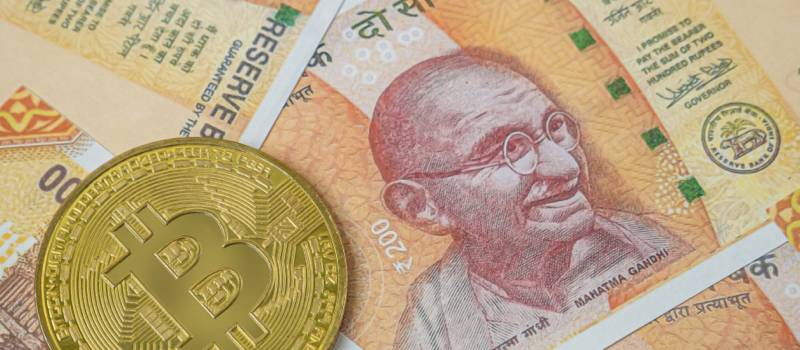
A report in the local daily newspaper, the New Indian Express, suggested that lawmakers in India are looking to classify Bitcoin as an ‘asset’ which would then be regulated by the Securities and Exchange Board of India (SEBI). According to the paper, SEBI is expected to oversee Bitcoin activity in India and will classify it as a proper, regulated ‘asset.’ Thus far, Bitcoin has existed in a gray area in the country, and as of now, it cannot be used as local currency. The move comes shortly after the central American country of El Salvador legalized Bitcoin as ‘legal tender’ right alongside the US dollar—meaning the decade-old asset can be exchanged for goods and services similar to how dollars are exchanged. Sources cited in the news report promise that a so-called ‘Cryptocurrency Regulation’ bill is likely to be tabled in Parliament during the Monsoon session. Ketan Surana, the director and chief financial officer at crypto exchange Coinsbit (and a member at the Internet and Mobile Association of India) supported the sources. “We can definitely say that the new committee which is working on cryptocurrencies is very optimistic on cryptocurrency regulation and legislation,” said Surana. He added, “A new draft proposal will soon be in the Cabinet, which will look into the overall scenario and take the best step forward. We are very hopeful that the government will embrace cryptocurrencies and blockchain technologies.” The report comes weeks after Shakthikanta Das, the governor of the Reserve Bank of India (the country’s central bank), had said that the government was exploring regulations to integrate cryptocurrencies into the broader economy while taking steps to mitigate potential risks. However, Das also had said at a separate venue, that “major concerns” remained, and that the government was apprised of the negative aspects of cryptocurrencies. Potential regulation would be seen very positively for what is one of the world’s most populous, yet economically challenged, countries.
All these Latin American countries want to adopt Bitcoin…and quickly.
Mexico’s government officials are prepared to propose crypto regulation before its Chamber of Deputies with Mexican senators, Eduardo Murat Hinojosa and Indira Kempis, leading the way. In the race to legalize Bitcoin (BTC), a lot still can happen before the next legal tender status announcement. The two Mexican senators in favor of Bitcoin are expected to present their ‘crypto regulation’ proposal before the Chamber of Deputies, said Senator Kempis in a tweet, confirming she will be the wingmen in the ultimate Bitcoin adoption plan, initially announced by Eduardo Murat Hinojosa. In Mexico, the Chamber of Deputies of Congress is the lower house of the federal Legislative Power. The current Fintech Law, which regulates two types of companies – electronic payment institutions (EPIs or electronic money issuers) and crowdfunding institutions – will need to be updated for crypto regulations to be born. That is just what the two senators hope to do. Under the current law, both of the two aforementioned institutions are permitted to operate with cryptocurrencies that are authorized by the Bank of Mexico.
Meantime, Panama officials are preparing to raise the issue in their National Assembly. Gabriel Silva, a Congressman in The National Assembly of Panama, announced on Twitter his intention to propose legislation for the country to embrace Bitcoin and cryptocurrencies. “This is important. And Panama cannot be left behind. If we want to be a true technology and entrepreneurship hub, we have to support cryptocurrencies,” said Silva in his tweet. He then added that he will be working on preparing a proposal to present at the National Assembly of Panama. Other Latin American countries are joining the Bitcoin adoption race with their own representatives preparing to challenge current regulations within their respective countries. These include Francisco Sánchez for Argentina, Fabio Osterman and Gilson Marques for Brazil, Jehudi Castro-Sierra for Colombia, and Carlitos Rejala for Paraguay. Will Latin America lead the way for the rest of the world?
Community reacts after Dfinity token ICP loses 80% of its value since May
A little over a month ago, crypto enthusiasts were hearing about a new project on the top 10 rankings of cryptocurrencies – by market cap in the form of the Internet Computer Protocol (ICP). Run by the Dfinity Foundation, the project was trading for as high as over $580 and had a trading volume of $500 million. It was riding a bullish wave against the broader crypto market which was bearish. Developers of the ICP had labeled their project as a way of getting power back from “big tech,” and to put it in plain terms, they were focused on building a more decentralized network. However, in recent weeks, the value of the project has badly fallen, and it has lost over 80% of its value from its all-time high in May. Last week, it was trading at $66. ICP has also fallen out of the top 10 rankings of crypto assets, and it now ranks as number 17. Community reactions to the ICP decline are full of opinions as to why the project has seen a drop in its value. Users on Reddit say that while the idea and technology behind the project is a sound one, the project’s decline can be tied to greed and poor distribution. “The coin itself doesn’t even sound that bad judging from reading about their tech, it’s just the distribution that’s disgusting,” wrote ‘SweetPie123,’ the post’s creator. They added, “Sad to see a decent project getting ruined by greed. Early investors bought anywhere from as little as 3 cents to around $5 per coin. Every month new supply gets unlocked, increasing sell pressure.” Another user, Set1less, said, “ICP is a centralized shitcoin that is peddled as ‘decentralized’ to the elites and their cronies in IMF and WEF.” Some users even said they felt lied to about the protocol being decentralized.
Tanzania’s president is now calling for Bitcoin and crypto adoption
As per local newspaper The Citizen, Tanzania’s President Samia Sulhulu has asked the country’s Central Bank to start exploring the crypto sector, in what appears to be the latest move by a sovereign country to embrace cryptocurrency. The announcement by the President was made on June 14th, wherein she noted, “We have witnessed the emergence of a new journey through the Internet. My call to the Central Bank is that you should start working on that development. The central bank should be ready for the changes and not be caught unprepared.” While noting that throughout the East African region, no country has accepted or started making moves to adopt cryptocurrency; she called on the country’s central bank to be prepared for all eventualities. The announcement in Tanzania came shortly after moves in the countries of Mexico, Uruguay and Panama began adopting and legalizing cryptocurrency as a permanent means of exchange within their countries. Lawmakers in Mexico, led by Eduardo Murat Hinojosa, have recently begun to push for greater adoption of crypto, including expressing public support for its use. While the African continent is generally still behind in the race to recognize and adopt crypto, the region has recorded massive peer-to-peer Bitcoin trading for years. The sub-Saharan African country of Nigeria alone represents one of the highest volumes of bitcoin transactions globally, led only by the United States. That country recorded $8.5 million in Bitcoin transactions weekly and is followed by Kenya and Ghana at $3 million, $2 million, respectively, on the African continent.
South Africa recorded $1.6 million in weekly transactions. Tanzania currently sits at seventh with nearly $90,000 worth of trade over the past seven days.
Goldman Sachs announces Ethereum futures, institutional interest grows
By the third week of June, Mathew McDermott, US multinational bank Goldman Sachs’s global head of digital assets, told Bloomberg that GS will begin to offer trading in Ethereum (ETH) futures. Roughly a year after denouncing cryptocurrencies as a non-asset class, the US multinational investment bank and financial services company opened up to Bitcoin (BTC), and is currently diving deeper into the Ethereum ecosystem. Futures are financial instruments which allow traders to bet on the price movements of underlying assets without the need to hold that asset. This is a means for investors to get involved with assets while avoiding the many issues related to custody and regulations. In May, the company restarted a trading desk to help their clients invest in publicly traded futures tied to Bitcoin, and it also led a $15 million investment into Coin Metrics, a cryptocurrency and blockchain data and analysis provider. According to McDermott, the bank plans to offer options and futures trading in Ethereum in the upcoming months. He told Bloomberg, “We’ve actually seen a lot of interest from clients who are eager to trade as they find these levels a slightly more palatable entry point.” McDermott was named head of the cryptocurrency efforts last year and since has been expanding his crypto team. “We see it as a cleansing exercise to reduce some of the leverage and the excess in the system, especially from a retail perspective. We are looking at a number of different companies that fit into our strategic direction.” Regarding their latest Ethereum driven plans, he added that his communication with clients reveals their crypto ambitions. “Despite the material price correction, we continue to see a significant amount of interest in this space. Institutional adoption will continue.” In last week’s survey of 850 institutions, Goldman Sachs discovered that almost 10% are trading crypto, and every 5th is interested in it. As more investors keep discovering lucrative opportunities within the vast crypto space, fewer put their money in centralized banks, causing them worries and, important to note, slowly spurring their evolution.
Swissborg’s anthony lesoismier shares investing gems for crypto investors
Investing for the long term, instead of using leverage on minute charts for short-term gains, is a much more prudent strategy for those looking to make it big in the crypto market. Since over ninety percent of all hopeful crypto traders end up losing money when trying to time the market, long-term horizons are the only way to go. Anthony Lesoismier, the chief security officer and co-founder of the crypto app Swissborg, swears by it. Last week, he sat with Alex Fazel of the crypto edutainment platform CryptoNites, in order to share market tips and tricks for those just beginning as traders and investors. His focus was how to be successful in the notoriously volatile crypto market. Lesoismier started out as a quantitative analyst for hedge funds back in 2008 and worked in sales trading for the next nine years or so. Lesoismier pointed out that the attitudes of the current culture were part of the reason why investors were failing to make the right choices for themselves, and many had not even considered the actual risks underlying their investments. “I think we have a thinking system that does not encourage people to think by themselves. Let me give you an example: If you go to see a professional investor, he will tell you that you must diversify. So, you must take this much money to invest, and you should take a bit of that and a bit of that. Even if you don’t believe in it, you should invest. For example, if you have 100k to invest, you should buy 80% of US Treasury bonds, 10% of Tesla, and 10% of the S&P. When we calibrate this kind of portfolio, we can fairly say that you’re not going to lose more than 10k, 10% of your portfolio. But if you don’t believe in it, the risk address return would not be good again.”
Lesoismier further explored his point by stating, “So when you invest in Bitcoin at $1,000, visualize that if it goes back to zero, then your risk is $1,000. But what is the probability that it goes above $2,000? What is the probability then of (it) going to $10,000 and (your) making $9,000? When you think about it, there are few assets with this property where you can get it, (and it) can go much higher, or it goes down, right? So now Bitcoin is at 30k, what’s the probability that it goes to zero or it rises above 60k? And of course, the more major an asset becomes, the less symmetry you will find. One of the examples: If you look at the Bitcoin charts, you can see who the public movement is and all these things, but maybe you can learn from the future market. Between the spot market and the futures market, when the spread is really high, it means that there is a huge demand on buying the future market, which means that people are rushing to buy the market, (and) they don’t care about the price, they’re ready to pay a premium,” Lesoismier was herein suggesting how investors could use such data to determine which direction a market trend could end up forming.
You can soon bet on Bitcoin’s dominance against other cryptos
Binance will soon allow traders to bet on Bitcoin’s increasing or decreasing share of the crypto market by offering a new product, the crypto exchange said in a release late in the week. Offered under the ‘BTCDOM’ ticker, the product is a cryptocurrency price index that reflects the market dominance performance of Bitcoin by comparing the asset to the top 20 cryptocurrencies on Binance by market capitalization (excluding stablecoins). Binance said in a post at the end of last week, “The BTCDOM Index is a metric that traders can use to quickly get a sense of Bitcoin’s value relative to that of the broader cryptocurrency market.” Bitcoin’s dominance is a measure of the asset’s market share relative to other cryptocurrencies. Bitcoin accounted for as high as 93% of the entire crypto market in 2013, and then fell to its lowest – 33% in January 2018. Recovering to over 69% in 2020, it has since fallen to 43% as of last week. Many charts compare Bitcoin to all other cryptocurrencies, while BTCDOM is relative to just 20 of them. This will cause figures to vary, and so one must be aware of perspective when comparing data. As per Binance, the BTCDOM Index will provide insights into the market and can be used as a tool to speculate on Bitcoin’s relative strength against other cryptocurrencies. BTCDOM will be a ‘perpetual’ contract, which means that as a futures product, it will carry no expiration date; and it will also be Tether margin, with USDT as collateral. Traders will have access to 25x leverage. This will allow traders to make a macro bet on the crypto market. For instance, if altcoins gain market share relative to Bitcoin, the index will lose value. Similarly, if altcoins lose market share relative to Bitcoin, the index will gain value and traders will be able to squeeze out a profit and/or hedge their bets. Binance explained, however, that the BTCDOM index is unlikely to alternate between gaining value and losing value. “In certain conditions, if Bitcoin falls in price, but the rest of the cryptocurrency market falls at a similar rate, then Bitcoin dominance is likely to remain the same,” the post added.
Bitcoin (BTC) miners in China plot plans to ‘go green’
The local outlet CGTN said towards the end of the month that some of China’s storied Bitcoin miners are planning to use more renewable energy sources to power their expansive mining rigs. This came in reaction to Chinese officials saying last month that they plan on cracking down on mining farms due to their high-power usage and large environmental impact. Illegal coal extraction to power mining farms in some regions was viewed as one of the problems because this ran against China’s continual efforts to go green and become carbon neutral. Some miners are looking to bounce back now. Arthur Lee, CEO of SAI, a Bitcoin mining company, said in a statement, “We are trying to collaborate with power generation companies to know the status of excess energy generation, and they can be connected to bitcoin mining to prevent the energy wastage.” For those unfamiliar, Bitcoin mining is a process that uses a vast computing system which solves millions of complex calculations each second to validate transactions on the Bitcoin network. This requires massive amounts of energy for the maintenance, cooling, and running of the machines. Many countries have come down hard on this process, causing the exodus of influential miners from those countries to other regions, with Serbia, Texas, and many Central Asian countries emerging as top contenders. Also, mining has given rise to the usage of unconventional energy sources, such as volcanoes and cow manure. Lee went on to explain that “Bitcoin miners thrive[d in China in the past] because of the cheap electricity, easy availability of land, affordable labor, and safety. But things have changed for us in recent years because of the recent regulatory changes. The cheapest energy is where the energy is idle,” referring to electricity generated by solar and wind farms which aren’t fully utilized since they are not typically connected to a grid. A significant percentage of China’s solar and wind energy potential are based in Xinjiang, Inner Mongolia, and Gansu. Some academics say Bitcoin mining has helped China’s inner economy and should not be driven out at all. Liu Changyong, professor at Chongqing Technology and Business University, stated, “We should not forget that Bitcoin mining generated huge tax revenue and created job opportunities, helping the country’s fight against poverty.” Instead of moving away from communal goals, he added that policymakers, power companies, and Bitcoin miners should come together to resolve the issue and grow the industry. “[It’s] a win-win deal for everyone,” Changyong added. But one is left wondering, will the Chinese government listen to such prudent guidance, or are they too busy creating new strains of virus?
Holder of 92,000 BTC explains why energy concerns aren’t Bitcoin’s biggest threat
Michael Saylor discussed what he perceives as the biggest risk to Bitcoin, and it had nothing to do with ESG (environmental, social, or governing) factors. ESG refers to a set of standards that investors use to determine how a particular company stacks up in terms of social responsibility. For instance, environmental criteria look at how a company performs in relation to ecological concerns. Social criteria will examine how a company manages dealings with employees, suppliers, customers, and communities. Finally, governance, or governing factors, refers to how an entity handles its leadership, audits, internal controls, and shareholder rights. Ever since Elon Musk spearheaded environmental concerns around Bitcoin’s proof-of-work mining practices, ESG factors and templates have been thrust onto Bitcoin’s asset model. This article explores why the ESG concept is better suited for use in relation to a public company, and not crypto. While there are some overlaps, publicly traded companies buying, selling, and holding BTC should not explore how ESG relates to Bitcoin, which is an asset class and does not follow the codes of conduct for a business model. It should go without saying that ESG activism is not a threat to Bitcoin.
The first open Bitcoin Mining Council (BMC) meeting took place earlier last week. The event featured guest speakers discussing industry trends, as well as a Q&A segment. When Michael Saylor was asked if there is a growing concern regarding Bitcoin due to ESG factors, he explained that this was low on the list of threats to Bitcoin. “I don’t actually think that the threat to Bitcoin is gonna be ESG activism directed at publicly-traded companies. I don’t think that’s the worry,” he said. He dismissed “social” on the grounds that BTC is empowering. In terms of “governance,” he made the point that there is no Bitcoin leadership team. He then took the opportunity to say, “We know, with regard to social goals, Bitcoin is empowerment to eight billion people on the planet of property rights. And with regard to governance, there is no governance because there is no board and there is no CEO and no management team of Bitcoin. You couldn’t govern it if you wanted to.” However, when it came to “environment,” Saylor was less certain of low impact upon Bitcoin. He admitted there was an environmental threat coming from a media-driven narrative that enjoys turning negative any chance it gets when it comes to anything with a certain popular appeal. Thus, in turn, can create a political drive which would by necessity force legislative action from a nation-state. But then Saylor rounded off by saying the biggest risk to Bitcoin is ignorance, driven by the mainstream media, which wants its own way so it can feel self-assured in its own empowerment. He concluded that it was not the direct impact of the environmentally sustainable factors themselves that might hurt Bitcoin in the future, but the ignorant and propaganda-driven mainstream media, especially the one in the U.S.
Goals of the BMC include promoting transparency, notating environmentally friendly energy sources used for proof of work, and better education around BTC mining, in general. Saylor said he intends to use the BMC platform to take control of the Bitcoin narrative from “uninformed parties.”
MicroStrategy buys 13,005 more Bitcoin, now holds 105,000 BTC
CEO Michael Saylor of the business analytics firm MicroStrategy said in a tweet at the end of the month that his company has acquired 13,005 more Bitcoin (BTC). The firm now holds over 105,000 Bitcoin in total. Saylor tweeted, “MicroStrategy has purchased an additional 13,005 bitcoins for ~$489 million in cash at an average price of ~$37,617 per bitcoin. As of 6/21/21 we #hodl ~105,085 bitcoins acquired for ~$2.741 billion at an average price of ~$26,080 per bitcoin.” Earlier in the month, MicroStrategy announced the issue of $400 million in a convertible note, with all the proceeds to be reinvested in Bitcoin. The note was oversubscribed by over $100 million, thus leaving a total of $500 million meant for Bitcoin. 92,000 BTC is now held in the custody of a subsidiary company called ‘MacroStrategy LLC.’ Founded as a business analytics company, MicroStrategy lists its Bitcoin purchases as one of two ‘core’ business strategies. A press release from the company at the beginning of last week stated, “Acquire and hold bitcoin, which we view as a dependable store of value supported by a robust, public, open-source architecture untethered to sovereign monetary policy.” Meanwhile, MicroStrategy’s Bitcoin buying spree probably is not finished just yet. It was reported earlier this month in CryptoSlate, that MicroStrategy is interested in selling over $1 billion of stock and using the proceeds for ‘general purposes’—one of which could include buying even more Bitcoin.
BTC dumps after Agricultural Bank of China issues, deletes, and reissues Bitcoin ban notice
Hold onto your horses! At the beginning of fourth week of June, The Agricultural Bank of China (ABC) published a Bitcoin (BTC) ban announcement, which is nothing new, restating that its services must not be used for cryptocurrency-related transactions and activities. Minutes afterwards, this announcement was deleted. For several hours during the morning, everything was quiet. Then, without warning, the ABC went ahead and published the ban all over again. ABC is one of the “Big Four” banks in China – it is state-controlled and owned variously by the government’s investment company Central Huijin (40.42%), the Ministry of Finance (39.21%), the National Social Security Fund (3.02%), and China Securities Finance (1.92%). As part of the first statement, the ABC said that they will not participate in cryptocurrency transactions and related activities. They argued, “Customer accounts participating in such activities will be closed and customer relationships will be terminated.” This announcement was deleted only minutes after being posted, and it was still early Monday morning. But it did not matter, when the news about this statement went out, it immediately sent the price of Bitcoin (BTC) down ten percent (what were they playing some sort of mind game? Had the ABC gone short on crypto themselves, covered their bet, and then gone long?). A few hours later, a similar statement released by the ABC, prohibiting the use of their services for Bitcoin and other crypto transactions, was once again made public by the bank. It stated, among other things, that “in accordance with the recent consultation and guidance requirements of relevant departments of the People’s Bank of China, our bank will continue to carry out the crackdown on virtual currency transactions.”
The bouncing dot, which was the ABC notice, was then put into Communist context as the People’s Bank of China (PBC) issued a statement saying domestic banks and the payment platform Alipay were summoned by the central bank authorities and ordered not to provide services linked to the trading of cryptocurrencies. Besides prohibiting them from providing crypto-related products and services, the institutions were ordered to revoke payment channels for crypto exchanges and over-the-counter platforms. Sounds like a fun place to live, no? The PBC blamed cryptocurrencies for disrupting the normal order of financial activity and providing room for illegal cross-border transactions. Along with prohibiting “crypto-related activities,” the lenders responded in an interview with local outlets that they had been instructed to “thoroughly inspect and monitor” their clients’ transactions for potential crypto involvement. The announcements and the re-announcements were all on Monday of last week, after a ceasefire during the weekend before which witnessed the Bitcoin hashrate plunge following the previous Friday’s mining ban in the province of Sichuan. Everybody wants to rule the world, but nobody likes being told what they can and cannot do (especially when obvious to the world their government is reacting purely out of fear because there is a new asset class of which they are finding it very difficult to leverage any form of control!).
Central Bank of Portugal awards first licenses to local crypto exchanges
On the opposite end of the freedom spectrum, the Banco de Portugal (Portugal’s Central Bank) issued operational licenses to two local crypto exchanges for the first time ever, a notice on their website shows. Receiving the licenses were Lisbo-based Criptoloja, and Braga-based Mind The Coin. Pedro Borges, chief executive officer at Criptoloja, said in a statement, “It was a long way. Being the first regulated exchange in Portugal means a lot.” Borges’s exchange filed for the first license on September 29, 2001, as per reports. Banco de Portugal released a statement saying that the regulation is, however, limited to AML/CFT purposes, and does not extend to other areas of prudential, market conduct, or any other activities. Banco de Portugal is said to have received five formal registration requests from exchanges this year, and over 60 informal contacts. Their statement went on to refer to cryptocurrencies as virtual assets, and asserted, “Notice of the Banco de Portugal regulates…entities that intend to carry out, within Portuguese territory, activities with virtual assets subject to registration, as well as subsequent changes to the elements to be registered.” The registrations make it legal for the two companies to offer exchange services to users in Portugal. Criptoloja plots a launch in the next “couple of weeks”, which could give that company and Mind the Coin a head start on businesses that will get registrations in the future. Portugal is one of a few handfuls of countries friendly towards Bitcoin and other cryptocurrencies. Authorities are taking the regulate, rather than ban approach towards the burgeoning asset class in the hopes of such moves paying off in the future (economically and financially). Under the terms, the Banco de Portugal’s new license overlooks activities across exchange services between one or more cryptocurrencies and fiat currencies, and also the transfer services of cryptocurrencies. This is similar to what many countries in Europe, and, predominantly, Latin America, are doing. Unlike China’s draconian and punitive approach to an asset they can’t control, this is the much more enlightened product of the if you can’t fight it, you join it paradigm.
On June 24th, Bitcoin hovered near $30,000, Ethereum failed to break $2,000
Bitcoin and Ethereum prices bounced back above key support levels as bulls took advantage of oversold conditions at the end of last week. Cryptocurrency markets bounced upward after a big drop-off, with Bitcoin and Ethereum being up by 15% and 17% respectively. The move came on the back of El Salvador president Nayib Bukele releasing rendered images of the proposed Bitcoin mining unit powered by the country’s active volcanoes (the thermal energy generated from volcanoes can be converted into electricity, and in turn be used to power mines). However, just as soon as it seemed prices were getting back on a firm footing, they retraced the entire move as sellers sold into strength. Even more traders then came in and once again took advantage of the oversold conditions on most of the cryptocurrencies. Buyers were active after the shakeout – did I hear somebody yell roller coaster? Professional and seasoned investors would know that this is nothing new under the sun (and that hot orb has been around for quite some time) – so, what’s next for Bitcoin? Of importance to note is that we watched Bitcoin bounce off of the $28,800 support and manage to close the candle in a bullish ‘hammerhead’ pattern (a hammer is a type of bullish reversal candlestick pattern). The next resistance is at the $36,600 region. A rejection is possible in that area unless the price uptrend is followed by a volume influx. Bitcoin’s relative strength index (RSI) also had a sharp rise after it had begun looking bottomed out. The positive buyback after this nerve-wracking drop clearly shows the buyer’s interest in bitcoin. But the price continues to be ranging between the $30,000 and $38,000 areas, for the most part. Meantime, it leaves one wondering then, what’s next for ETH? Ethereum’s price held well above its 200-day Moving Average and bounced nicely back above $2,000. A daily close above $2,000 will be beneficial, since it might be an indicator that there will be positive price action in the coming days. The next resistance area for ETH is around the $2,100 zone, where rejection is likely.
Duo vanishes with 69,000 Bitcoin, stash worth $4 billion at peak BTC prices
On a lighter note: you can’t make this stuff up! Two South African brothers made away with nearly 69,000 Bitcoins earlier this year, hacking their own exchange platform, Africrypt, and bagging one of the biggest crypto heists in dollar terms ever. Some background first: Africrypt was set up in 2019 advertising “bumper returns” for investors. But those hopes did not take long to turn into a field of broken dreams. The troubles started in April, when Ameer Cajee, the elder brother, told clients that the company fell victim to a hack. Cajee, a shifty coward, told everyone to not report the incident to authorities at the time, citing an extended recovery process if the cops were involved. That did little to subside client fears. The legal team appointed to work on the case, Hanekom Attorneys, said, “We were immediately suspicious, as the announcement implored investors not to take legal action.” You think? They went on to say, “Africrypt employees lost access to the back-end platforms seven days before the alleged hack.” Calls made by the lawyers to both Ameer Cajee and Raees Cajee, his younger brother, went straight to voicemail (maybe they defected to China?). Surprise, surprise – the company’s website is non-functional nowadays, and all employees are reportedly in the dark as well.
But wait! There’s more! During investigations, the Hanekom Attorneys found that Africrypt’s pooled funds had been transferred from their South African accounts and client wallets via “tumblers” and “mixers”—software which jumbled up Bitcoin addresses to make them ‘untraceable.’ The stash, worth $2.3 billion today, would have been worth over $4.4 billion during Bitcoin’s price peak of $64,000 in mid-April. This, of course, is many multiples South Africa’s $140 million daily trading volume and comes as a reality check to local lawmakers, who have been scrambling to regulate the crypto scene in the country recently. The Africrypt case comes only mere months after another South African company, Mirror Trading International, made away with over 29,000 Bitcoins, or over $1.2 billion at the time. Local authorities are said to be on the lookout for the brothers (perhaps they should send a team of “virological scientists” into China), but the duo seem to have vanished without a trace thus far. International crypto exchanges have been kept in the loop and have been asked to look for any suspicious Bitcoin withdrawals.
JPMorgan says Bitcoin may dump to $25,000, cites grayscale’s GBTC unlocks
As per a report on Bloomberg, JPMorgan analysts say the upcoming ‘unlock’ of a popular Bitcoin fund could cause further selling of spot BTC, driving the prices of the world’s largest cryptocurrency by market cap to as low as $25,000. One of JPMorgan analysists, Nikolaos Panigirtzoglou, wrote, “While weak flows and price dynamics resulting from last month’s selloff fueled Bitcoin’s recent declines, possible sales of shares in the Grayscale Bitcoin Trust, upon the expiry of a six-month lockup period, could be an additional headwind.” Bitcoin has fallen nearly 50% over the past few months from a mid-April high of $64,800. By the end of last week, it was trading around $32,000, with technical analysis suggesting an overall bearish market for now.
Grayscale affects Bitcoin because their products are publicly traded financial instruments that hold a small amount of spot crypto, such as Bitcoin or Ethereum, in a custodial account for each share they offer on the open market. Most analysts believe they are a crucial part of the broader crypto market because they are aimed at high-net worth individuals and institutional investors who may not want to interact with a shady crypto exchange (which may shut down overnight), or deal with custody of holding their own crypto (imagine trying to safeguard millions of dollars’ worth of crypto holdings?). Products like Grayscale Bitcoin Trust (GBTC) are hence one of the only ways for regulated investors in the US to gain exposure to the crypto market, and one of the problems is that GBTC holdings are locked for six months, because they work as a subscription rather than a purchase on the open market. Henceforth, they trade at a premium. This creates an arbitrage opportunity and yet it also changes market dynamics. GBTC presently holds over $21 billion of Bitcoin.
So, to further examine what this might mean: when GBTC ‘unlocks’, investors sitting on a mountain of profits compared to the price they came into the fund six months ago, are incentivized to sell (rather than hold). With tens of millions of dollars’ worth of Bitcoin being sold, this will create tremendous downward pressure. This is just the kind of price action that the analysts at JPMorgan refer to. “We are reluctant to abandon our negative outlook for Bitcoin and crypto markets more generally,” the bank’s analysts said. They added that their signals remain overall bearish, and that “it would still take price declines to the $25,000 level before longer-term momentum would signal capitulation.” Even more daunting for now is that Jeffrey Gundlach of DoubleLine Capital tweeted last week that it would be game over for Bitcoin if prices were to fall below $30,000. “If XBT closes below $30K, it’s a big deal,” he said. Safe to say, most of those involved in the crypto market would like to avoid seeing that occurrence. And yet, it’s all been said before….
What does China’s crypto crackdown mean for the industry?
The latest crackdown has compelled many bitcoiners to scramble for the exits. Jim Cramer, for example, sold “almost all of my bitcoin” after getting spooked. One Twitter user pointed out that many of bitcoin’s critics refuse to buy the asset “because China controls it” – while others sold “because China banned it.” So, is the latest ban “short-term negative, long-term positive” as Skybridge founder Anthony Scaramucci suggests – or is the industry set for a protracted period of turbulence and uncertainty? What exactly has China done? Even with all that, after falling below $30,000, crypto saw a nice 15% bounce to defy the doomsayers. Who knows what the future holds? What we know with certainty is that miners aren’t an easily discouraged bunch. And countries with an abundance of stranded or wasted energy resources should prepare themselves to jump at the prospect of raising significant revenue via bitcoin mining. China has never been a fan of bitcoin. The Communist nation’s leaders have been sounding warnings, imposing restrictions, closing exchanges, and threatening bitcoiners for over a decade. China FUD – fear, uncertainty, and doubt is a propaganda tactic generally aimed at influencing perception by disseminating negative, dubious, and/or false information in order to appeal to mass fear. As far back as December 2013, the People’s Bank of China became allies with the nation’s financial watchdogs and slapped a ban on banks handling bitcoin transactions. Despite that, the love affair between Chinese users and crypto has grown more intense over the years. At present, anywhere between 50-65% of global bitcoin mining is performed in the country, and Chinese traders and investors carry enormous influence on the market. Analysts are left wondering if recent events could represent an inflection point. Ostensibly, China has ordered banks and payments platforms to stop supporting digital currency transactions, with directives also issued to halt bitcoin mining in Sichuan – where many of the country’s largest mining farms are located.
The latest instance of China FUD precipitated bitcoin’s fall below $30,000 for the first time since January. Some are wondering if the nation profited from falling prices. Everyone has a different perspective on China’s latest crackdown: It’s the death cross for bitcoin; it’s a bump in the road while miners decamp to countries that can offer cheap energy; it’s a golden opportunity for miners in other countries; it’s a China flex ahead of their long-anticipated CBDC release. With Xinjiang and Sichuan shutting down several gigawatts of coal-based bitcoin miners, there is another possible outcome: the network gets greener. Of all the blows aimed at bitcoin over the years, criticism of its energy footprint probably has the most traction. Even if those arguments can be disspelled, still, with less network processing power concentrated in the region, some firmly believe that bitcoin’s environmental profile will improve. This depends where the bitcoin miners fleeing China wind up settling. One of the companies left scrambling due to the CCP’s directive was Bit Mining, a publicly-listed Chinese mining firm that has quickly dispatched over two and a half thousand rigs to Kazakhstan. All of these are expected to be powered up in their new location by the start of July. Bit Mining has also started investing in mining facilities in Texas, where fossil fuels and wind power are quite abundant. Beijing-based mining giant Canaan has also set up a base of operations in Kazakhstan, crediting the region’s famously low electricity rates; however, over 70% of Kazakhstan’s electricity supply is coal-powered. The region already ranks fourth in the world for hashrate distribution, behind Russia (3rd), the United States (2nd), and China. Aside from Kazakhstan, the U.S. is likely to see a mining boom, thanks to bitcoin’s downward difficulty adjustment, and North American miners will earn higher margins, incentivizing participation from others keen to get in on the act. Though Texas is the obvious beneficiary, one Chinese logistics firm has reportedly airlifted 3 metric tons of mining rigs to Maryland. That may be a small amount of hashpower all-in-all, but it does prove that Texas isn’t the only game in town. Bottom-line: what will be China’s loss, will prove to be others’ gains!
The post The Digital Asset Landscape June 2021 appeared first on JP Fund Services.
Tradersdna is a leading digital and social media platform for traders and investors. Tradersdna offers premiere resources for trading and investing education, digital resources for personal finance, market analysis and free trading guides. More about TradersDNA Features: What Does It Take to Become an Aggressive Trader? | Everything You Need to Know About White Label Trading Software | Advantages of Automated Forex Trading




























